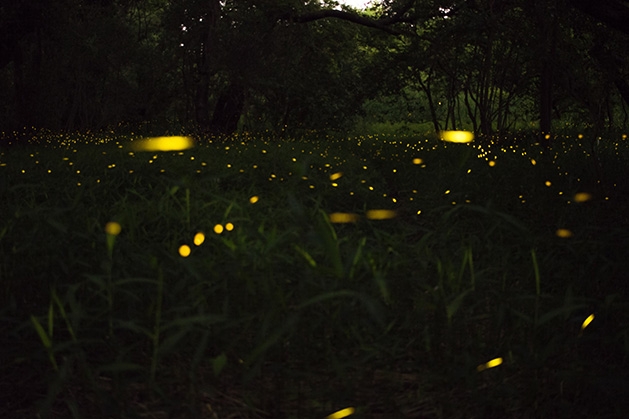
For a short and sweet season from June to July, I enjoy a nightly light show. I have been known to drag dinner guests, out-of-towners, neighbors and children out into the night, without flashlights, to view the spectacle of summer lightning bugs or fireflies. Not truly bugs or flies, so-called lightning bugs are actually bioluminescent beetles that go by the scientific name Lampyridae. They can be found around marshes, tall grasses and the edges of woods. At a distance, the flashing light they produce in their abdomens can render the landscape absolutely magical. Males will flash light in a series of bursts. The species that lives around me usually flashes 7-9 times before pausing and repeating. The incredibly efficient light—which produces almost no heat—is unsurprisingly sexy to female lightning bugs who will respond with a single flash if they are interested. But in order for this dazzling pick-up strategy to work, lightning bugs need darkness. Streetlights, garden lights and house lights left on overnight are believed to confuse lightning bugs and deter mating. So, turn off your night lights, pull over to the side of a road without street lights (County Road 6 in Orono is particularly good for lightning bug sightings), turn off your headlights and enjoy a fleeting and spectacular dating scene.
Anne Marie Ruff Grewal is a writer, editor and environmentalist who has recently published her second novel, Beneath the Same Heaven—a story of love and terrorism.









